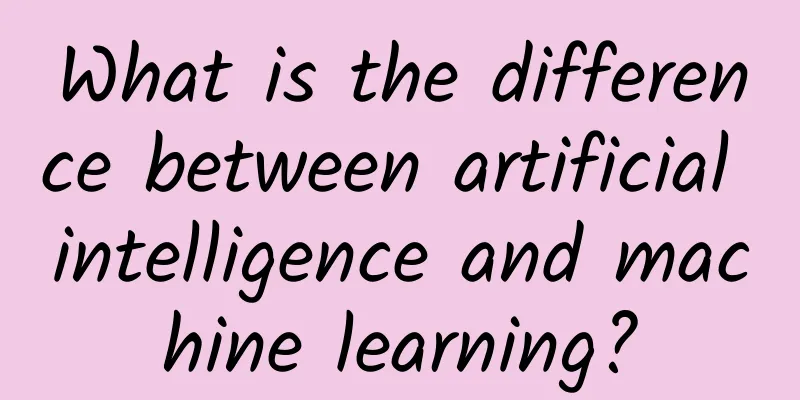What is the difference between artificial intelligence and machine learning?

|
【51CTO.com Quick Translation】 Artificial intelligence is not a new term, and its development history has been decades. It started in the early 1980s, when computer scientists designed algorithms that could learn and imitate human behavior. In terms of learning, the most important algorithm is the neural network, but it was not very successful because the model was too powerful and there was not enough data to support it. However, in some more specific tasks, the idea of using data to adapt functions has achieved great success, which also forms the basis of machine learning. In terms of imitation, artificial intelligence has a wide range of applications in image recognition, speech recognition, and natural language processing. Experts have spent a lot of time creating edge computing, color profiles, N-gram language models, syntax trees, etc., but unexpectedly the results were mediocre.
Deep Learning + Reinforcement Learning = Artificial Intelligence Compared to classical machine learning techniques, deep learning provides a more powerful prediction model that generally produces good predictions. Compared to classical optimization models, reinforcement learning provides a faster learning mechanism and is more adaptable to changes in the environment. [Translated by 51CTO. Please indicate the original translator and source as 51CTO.com when reprinting on partner sites] |
<<: Cutting in while driving is annoying. WiFi actually takes up lanes too.
>>: Ali Chen Haiqing: The future of intelligent human-computer interaction from Ali Xiaomi
Recommend
10gbiz: Los Angeles CN2/Hong Kong CIA data center VPS monthly payment starts from $2.75
10gbiz has launched a promotion this month, offer...
Why can Wi-Fi 6 be used by multiple people without being crowded? Intel's popular science is here
At the end of 2018, the Wi-Fi Alliance announced ...
Nine global manufacturers using 5G
Manufacturers around the world are beginning to a...
HTTP connection management diagram
The HTTP protocol is very important to us program...
The impact of the novel coronavirus on remote networking
As the new coronavirus spreads widely, many compa...
RAKsmart: San Jose/Los Angeles E3 server flash sale starting from $30/month, cluster server starting from $142/month, US/Hong Kong/Korea/Japan data centers
RAKsmart is a foreign hosting company founded by ...
Beware of online scams and cyber attacks during the World Cup! F5 ensures application security, allowing fans to watch the game with peace of mind
It is well known that the holiday shopping period...
Are you still worried about network operations? SD-WAN is here to save you!
Software-defined WAN or SD-WAN is a great example...
Justhost: Dallas data center VPS 50% off for a limited time, starting at $2.16/month, 24 data centers available in the United States/Russia/UK/Germany/Hong Kong, China
JustHost.asia recently offered a limited-time 50%...
Unleashing the Potential of NFV
Network Function Virtualization (NFV) held great ...
80VPS: Hong Kong/Japan/Korea VPS annual payment starts from 299 yuan, Los Angeles VPS annual payment starts from 199 yuan
The tribe has been sharing that there are a few C...
Tell you the real strength of the four major communication operators' 5G
Recently, our country has determined the 2020 &qu...
Competition and Cooperation among the Three Major Industrial Internet Camps
"Short-term cooperation, long-term competiti...
Development of Multi-core Fiber Connector Technology
Professor Ryo Nagase of Chiba Institute of Techno...
Huawei releases SoftCOM white paper on autonomous driving telecommunications network intelligence
[Shenzhen, China, April 17, 2019] Today, during t...









